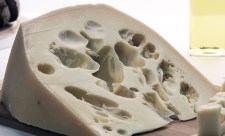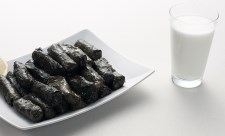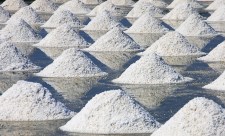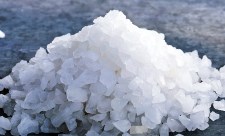Yes, you probably do not know but there are approximately 14 thousand different areas of use for salt (Mark Kurlansky – Salt: A World History) and it is not easy to find such important and valuable raw material. Salt, similar to some things, is a substance which is only felt when missing and which value is only understood when out of our lives and under normal conditions no one pays attention to it. It is imperceptible, even. However it is not possible to have life on earth without salt. No living creature can continue its existence for long without salt. And a life without salt with its 14 thousand known usages is unthinkable.
Salt Uses
Salt is crucial for many industries. Its compounds make it one of the most important materials in the chemical industry, since more than 50% of the chemical products depend on it at a stage of their manufacture. It is also used in the manufacturing of thousands of other commodities including glass, paper, rubber, and textiles as well as in water softening systems for industry and domestic use. Furthermore, it is used as a de-icing agent and as most commonly known food ingredient. For more detailed information of the different uses of salt, please see the section below.
Food Grade Salt
Since the human body is not capable of producing its own salt, we depend upon the various sources of salt in food to ensure our necessary daily intake. In Europe, around 7% of all salt produced is food grade salt. Salt has an important technological role in the manufacture of many foods, so that in addition to its well-known function as a preserver and a flavor enhancer, it is also fundamental to the consistency and texture of lots of our daily foods such as bread and cheese.
De-icing on highways
Salt, i.e. Sodium chloride is the most widely used de-icing agent in Europe and throughout the world due to its huge advantages over the alternatives. When salt is applied to ice and snow it creates a brine that has a lower freezing temperature than the surrounding ice or snow. It is also most efficient as a de-icer when spread before ice has formed. Whilst in theory salt can work to lower temperatures, it is usually used at temperatures down to -15°C.
Water Treatment
Hard water is water that contains invisible dissolved rock, principally calcium and magnesium minerals. Most commonly, people notice the effect of hard water because of a build-up of scale in kettles and on shower heads, or other domestic appliances that use water. The problems associated with hard water can be resolved by installing a water softener which removes the hardness minerals from the water. Water softeners operate on the ion exchange process. Essentially the water passes through millions of negatively charged tiny resin beads which attract the hardness minerals – calcium and magnesium. The resin is then washed to remove the minerals and is used again. And salt is essential for the regeneration of the ion exhange resins.
Chemical Uses
The chemical industry is by far the largest consumer of salt. lt is the raw material for the production of chlorine (Cl) and caustic soda (sodium hydroxide, NaOH); they are produced by the electrolysis of salt in the form of brine by the mercury cell process, the diaphragm cell process, and the membrane cell process. Chlorine, which is one of the most abundant and common chemical elements on Earth, is an extremely effective disinfectant and essential component in the chemical manufacture of thousands of vitale products used every day, such as PVC (construction and houses), for instance. Caustic soda solution is an essential ingredient in many industrial operations, including pulp and paper, detergent and the chemical processsing industry. It is also used in alumina, petrochemical and textile industries.
Soda ash is one of the three main ingredients for glassmaking, in which it lowers the temperature of the melt. Soda ash is also the raw material for the production of many sodium compounds, such as sodium silicate, sodium bicarbonate and sodium tripolyphospate. Furthermore, the pulp and paper industry uses soda ash in the chemical pulp manufacturing process.
Other applications within the chemical industry include:
- Pulp and paper industry: For pulping and neutralization; For washing and bleaching; For the processing of waste paper,
- Textiles: For example leather tanning; For the finishing of wool and cotton and for dyeing and bleaching; For deacidification in the production of spun rayon,
- Waste and water treatment, Petroleum additives,Dyes and intermediates,
- Pharmaceuticals: Salt provides the life essential nutrients sodium and chlorine regulating and impacting many body and hormonal systems. In some medical conditions the ingestions of those nutrients becomes crucial to treat and to reinstall the electrolyte balance in the body. Salt is also used as an ingredient in pharmaceutical products.
Animal Feed
Animals also require salt to keep them healthy. The right salt intake ensures their growth, strong immune and reproductive systems. Often agricultural animals and commercial livestock do not receive enough salt from foraging and other feeds and for that reason it is necessary to supplement their diet with salt.
Aviation Fuel - Additive
One of the most interesting areas of use for the salt is as an additive to the aviation fuel. After the aviation fuel is purified, salt is added so that there are no water molecules left in it.



























